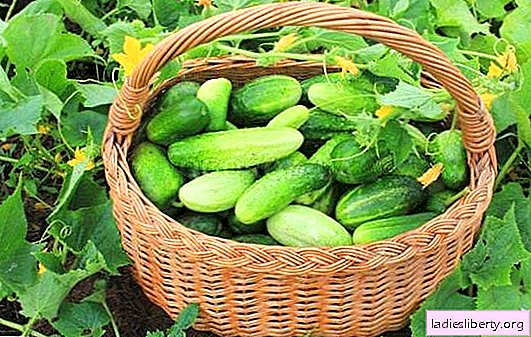
The pearl of the garden, the favorite of all gardeners is the garden rose. Her flowering and fragrance is the best reward for work and care. It is a pity to disturb and transplant the rose in the fall to another place, but sometimes it is impossible to avoid such a procedure.
Depletion of the soil, construction, or just changed the vision of the flower garden - and now the rose needs to be transferred to another place. After making the necessary preparations, replanting the bush according to all the rules, you can not be afraid to ruin your favorite plant. A traumatic event will turn into a useful one.
Preparation is the key to a successful rose transplant in autumn
People have been cultivating roses for so long that all the rules for the care, planting and cultivation of this flower have been tested in practice thousands of times. Even the ancient Romans were able to grow them in huge quantities, and in winter in special greenhouses. Therefore, do not act at random, just follow the rules:
1. The end of September, the beginning of October - the best time for a rose transplant in the fall. In another place, bushes are easier to take root, in which the outflow of nutrients from the aerial part to the roots has begun.
2. Prepare the plant for transplantation in advance. Already in August, feeding is stopped, watering is reduced, and fading inflorescences are left on the branches.
3. The new habitat should be sunny, with a good outflow of moisture. The stagnation of water in winter leads to overheating of the roots.
4. The soil for planting should be loose, fertilized. Ideally, if the site managed to "rest" from the plantations for at least a year, otherwise it is better to replace the soil with fertile one.
When transplanting roses in the fall to a new place (pictured), special attention is paid to the preservation of each root. Abundant watering before dredging the bush will create a lump of land with which the plant is transferred to the planting site.

If you want to move a dug plant to a considerable distance, it would not be out of place to carefully lay it on a cloth, wrap it with a ball of earth and tie it at the level of the root neck. In this case, you can plant along with the "packaging", simply by untying it, the fabric will quickly decompose in moist soil.
Pruning a bush when transplanting roses in the fall to another place
The rose bush selected for transplantation is dug wide, trying to maintain the root system. The main core, with a deep occurrence, is cut with a shovel at the maximum available depth and carefully remove the roots from the ground.
If the lump of soil could not be saved, and it crumbled, use this to check the condition of the underground part. Remove all diseased and damaged areas by cutting the root with a pruner to a white, healthy tissue. Be sure to trim the tips of seedlings with open rhizomes, this stimulates the growth of absorbent roots and improves the nutrition of a young rose.
Note! After trimming, the length of the roots should be equal to or slightly larger than the aerial part.
There are two opinions on how to deal with branches and leaves when moving a plant to a new place:
• shorten to columns 10 cm high, completely expose the branches, removing the foliage;
• leave the whole bush, with branches and leaves, for use by the root of the nutrients accumulated in the aerial parts.
When the autumn is warm and the humidity is high, cutting off the shoots can lead to the awakening of sleeping buds. Instead of preparing for winter sleep, the plant will heal in spring mode. Young branches will appear, which still will not have time to lumber and die in the winter, the root will lose a lot of strength. Under such weather conditions, it is better not to touch the branches and leaves immediately. If desired, they can be cut off when it is steadily cold.
If the autumn is cool, and it remains at least three weeks before the expected frosts, then the transplanted bushes will have time to prepare for the winter, young growth will not appear. So the bush can be cut before planting. It is also necessary to trim in the case of planting with a bare root.
Proper pruning for successful transplant of roses in the fall to another place

Features of transplanting roses in the fall to another place
The landing pit should exceed the size of the roots, usually 50x50 cm and up to 70 cm in depth. The distance between the bushes depends on the characteristics of the variety, for normal flowering roses need a lot of space. But sparse plantings are not so decorative, the soil dries faster, more weeds grow.
Further actions differ depending on the state of the root system. Two ways to plant roses:
1. Landing with a clod of earth. It is simply installed at the bottom of the pit, filling the remaining voids with a fertile soil mixture. Each layer is well tamped and spilled with water. There should be no air pockets - the roots die from contact with them.
2. Landing with bare roots. Fertile soil is poured into the center of the finished hole with a hill. A seedling is placed on it, and the roots are distributed along the knoll so that they do not bend up, but go down to the bottom of the recess. Little by little they fill the pit with earth, spilling and ramming it.
With an open root system, the planting process is slightly different, but even in this case it is important to compact and spill the ground so as not to “air” the roots.
The seedling is set so that the root neck (and hence the place of vaccination) is 3-5 cm below the soil level. This will save the plant from the appearance of wild growth in the future.
After filling the ground and watering the holes, check the depth of planting and pour around the bush of dry earth.
How to cover for the winter roses transplanted in the fall to another place?
The root of the transplanted plant has not yet fully grown and needs shelter from frost. There are several ways to shelter young seedlings for the winter:
• hilling by the earth;
• shelter with coniferous trees;
• fencing with wooden boards;
• use of modern covering materials, films.
Each gardener chooses shelter based on his abilities, weather conditions and varieties of roses. The main rule is not to cover the bushes until the real cold weather. Small first frosts harden plants.
Making transplants useful for rose bushes
Since it is impossible to avoid transplanting roses in the fall, they can be transferred to another place with benefit:
1. Improve soil quality. Fertile soil can be purchased at a garden store or prepared independently. To one part of the garden land add one part of humus and peat. Sand is added to the clay soil, clay to the sandy soil.
2. To control the acidity of the soil. Usually, over time, the soil acidifies. This can be corrected by adding ash, crushed chalk or dolomite flour.
3. Improve the root system. There is an opportunity to remove the diseased areas, check them for the presence of pests.
Be careful! In autumn, it is dangerous to overfeed the plants with nitrogen; violent growth may begin instead of a dormant period. From mineral fertilizers, it is better to choose potash, they contribute to the ripening of shoots and a better wintering.
Transplanting roses in the fall to another place allows you to add nutrition to the roots throughout the depths. After all, the main beauty of the garden requires a fertile layer of up to 40 cm. A competent transplant will not weaken the bush, but will make it even more beautiful. But it should be remembered that the next time you can transplant roses only after three years, so you should seriously approach the choice of location and quality of planting.











